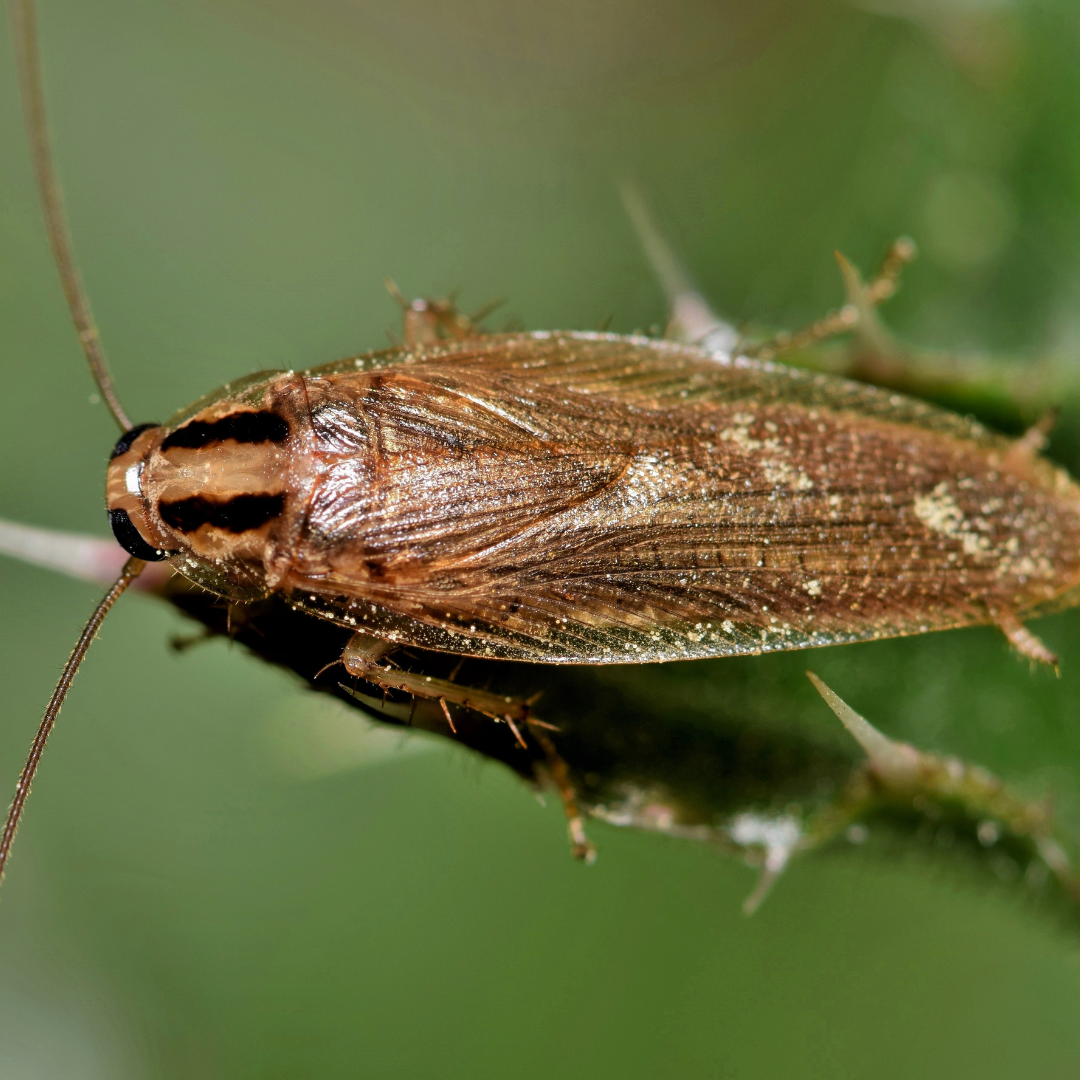German Cockroach
Your Title Goes Here

Proud Supporter of Disabled Veterans
No Contracts
Services provided without written contracts.
Introduction to
The German cockroach (Blattella germanica) is one of the most common and troublesome pests found in homes and commercial establishments worldwide. These small, nocturnal insects are notorious for their rapid reproduction and resilience, making infestations difficult to control. German cockroaches can contaminate food, spread disease, and exacerbate allergies and asthma. Understanding their biology, habits, and effective prevention methods is crucial for maintaining a pest-free environment and ensuring public health and safety.
Recognition
German cockroaches are small, typically measuring 13-16 mm in length. They are light brown to tan in color and have two distinctive dark stripes running lengthwise down their pronotum (the shield-like area behind the head). Unlike some larger cockroach species, German cockroaches have a more slender body and are fast movers. Nymphs, or immature cockroaches, are smaller and darker, with a tan stripe down their back. German cockroaches are often confused with other small roaches, such as the brown-banded cockroach, but the dark stripes on their pronotum are a key identifying feature.
Biology
German cockroaches undergo incomplete metamorphosis, progressing through three main life stages: egg, nymph, and adult. Females carry egg capsules (oothecae) until they are ready to hatch, which typically contain 30-40 eggs. These eggs hatch into nymphs, which go through several molts before becoming adults. The entire lifecycle from egg to adult can be completed in as little as 50-60 days, allowing for rapid population growth. German cockroaches are nocturnal and prefer warm, humid environments. They are omnivorous scavengers, feeding on a wide variety of food sources, including crumbs, grease, and garbage.
Habits
German cockroaches are primarily found in kitchens and bathrooms, where food, moisture, and warmth are abundant. They hide in cracks, crevices, and other sheltered areas during the day, coming out at night to forage for food. These cockroaches are adept at finding and exploiting food sources, often contaminating them with their droppings, shed skins, and vomit. They can spread pathogens and trigger allergic reactions and asthma in sensitive individuals. German cockroaches are also known for their resilience, being able to survive in harsh conditions and resist many common pesticides.
Prevention
Preventing German cockroach infestations involves maintaining good sanitation and reducing potential hiding places. Keep kitchens and bathrooms clean, promptly clean up spills and crumbs, and store food in airtight containers. Regularly take out the trash and avoid leaving dirty dishes in the sink overnight. Seal cracks and crevices around the home, especially in kitchens and bathrooms, to reduce hiding spots. Fix any leaky pipes and reduce moisture levels, as cockroaches are attracted to water sources. Regularly inspect and maintain appliances and cabinets to ensure they are free of cockroach activity.
Professional
If German cockroaches become a persistent problem, professional pest control services can provide effective solutions. STL Pest Control offers comprehensive treatments to eliminate cockroach populations from homes and commercial establishments. Their technicians are trained to identify cockroach hotspots and apply appropriate treatments, including baits, insecticidal sprays, and integrated pest management techniques. In severe cases, they may recommend ongoing maintenance plans to keep cockroach populations under control. Professional services ensure thorough and long-lasting control, providing peace of mind and a healthier living environment.



Our Office







